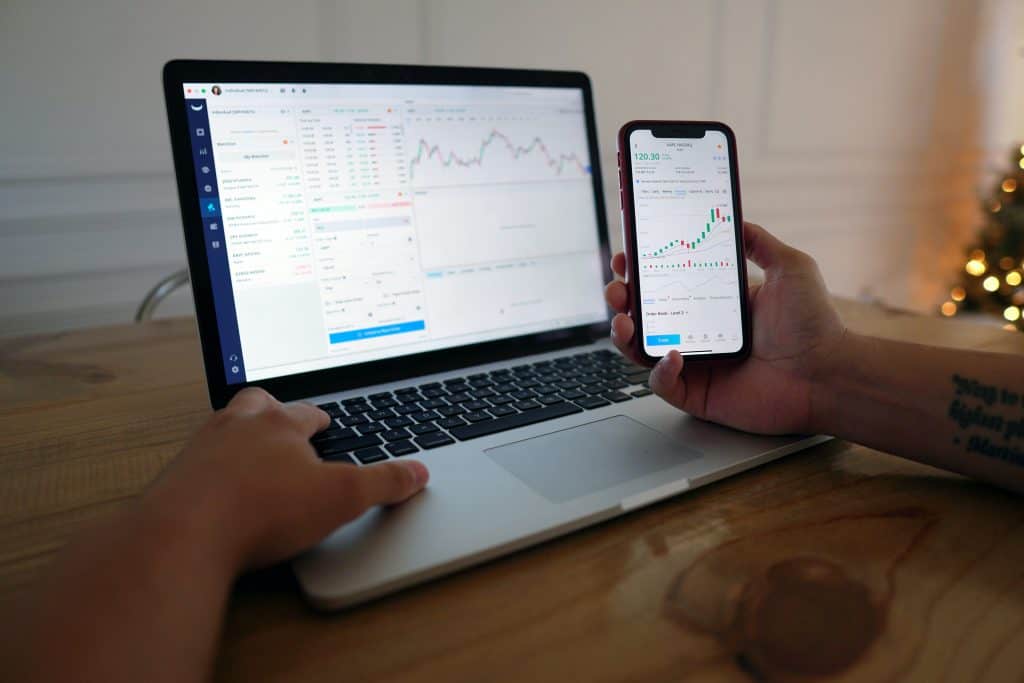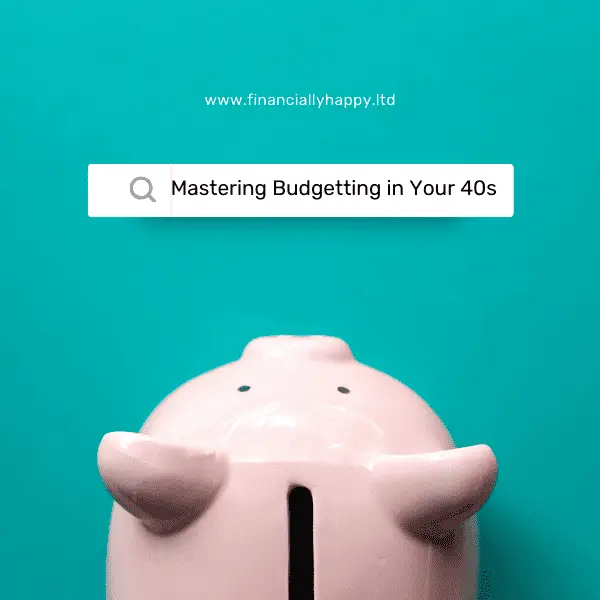Investing for Financial Independence: How to Build Wealth and Retire Early
As a financial coach, I have worked with many individuals who dream of retiring early and living a financially independent lifestyle.
Investing for financial independence means making smart decisions with your money to achieve your long-term goals. It’s about having enough money to retire early, travel the world, and enjoy life without worrying about finances. Investing is crucial to achieving financial independence since it allows you to grow your money over time and generate passive income.
While this may seem impossible with he current economic climate, it is entirely achievable with the right investment strategy.
In this blog post, I will share my insights on investing for financial independence and how you can build wealth to retire early, if that’s of interest to you.
Table of Contents

Photo by Joshua Mayo on Unsplash
Understanding the Basics of Investing
Before you start investing, it’s essential to understand the basics. Investing involves putting your money into an asset and expecting it to generate a return.
An asset is something that has 2 important features.
- You expect the item/thing’s value to increase over time.
- You expect that item will provide you with an ongoing rising income over time.
Anything else is not an asset but a liability as it doesn’t have the two features above.
Investments include stocks, bonds, mutual funds, real estate, and businesses. All of these have the 2 above features.
When you invest in these items, you can reasonably expect them to go up in value over the long term and provide you a rising income.
Each investment type has its own risks and rewards, and it’s crucial to diversify your portfolio to minimize risk.
Benefits of Investing for Financial Independence
Investing for financial independence has several benefits, including the potential for higher returns than traditional savings accounts.
The stock market, on average, has returned growth of 8-10%, way more than cash savings.
Additionally, investing can help you beat inflation, eroding your cash savings’ value all the time.
The growth in the stock market for example, has helped you beat inflation and kept the purchasing power of your funds.
Over time, your investments can grow and generate passive income through dividends or cashing in some of the growth each year, allowing you to achieve your financial goals faster.
Overcoming the fear of investing
The fear of losing money in a downturn stops many people from investing.
The way to overcome this fear and take part in the greatest wealth-building machine there is, is to:
Educate yourself: Learning about different types of investments and how they work can help you make informed decisions and feel more confident in your choices.
Start small: Begin with a small amount of money and gradually increase your investments as you become more comfortable.
Work with a financial planner or coach: A coach can offer guidance and help you create a personalized investment plan that aligns with your goals and risk tolerance.
Diversify your portfolio: By investing in a variety of assets, such as stocks, bonds, and mutual funds, you can spread out your risk and potentially reduce the impact of market fluctuations.
Stay focused on your long-term goals: Remember why you are investing and stay committed to your plan, even during times of market volatility.
Don’t let emotions drive your decisions: Avoid making impulsive decisions based on fear or greed, and instead, focus on your long term goals.
You can achieve a lot of the above by keeping it simple and investing in globally diversified low-cost index trackers. Index funds hold hundreds or thousands of companies in one low-cost fund. All the work is done for you or you need to do is automate your sare cash into it and watch it grow over the long term.
Understanding your risk tolerance
Your risk tolerance is a key phrase used again and gain in investing.
However, its often missed understood and therefore not acted on appropriately.
What many people call risk – the ups and downs of the stock market – is actually volatility.
Volatility is the ups and downs and the downs and up of the market, not things going bust. If you can handle this volatility, it is where your wealth is created. When you buy shares at a low price, they go up and up over time.
The real risk is that you run out of money or purchasing power in your old age – the risk you are trying to manage.
Having stacks of cash might mean you don’t run out of cash in your old age, but you do run out of purchasing power.
That’s why you invest- not because it’s guaranteed to make you rich in your old age – but that it’s highly likely to be more successful than keeping all your money in cash.
Your investing to reduce your risk of poverty in your old age.
If you want to reduce the risk of losing all your money in the stock market, then don’t invest in single companies but in low cost globally diversified index funds made up of thousands of companies. And then manage your behaviour towards wealth and not away from it.
Investing for Different Life Stages
Your investment strategy will depend on your life stage and financial goals.
For example, the younger you are the more volatility you might be willing to take. This might mean a higher title towards smaller companies and emerging market index funds.
As you get older, you may want to dampen this volatility with more broad-based global index funds with more companies in developed markets.
If you’re saving for shorter-term goals, you might want to consider more conservative investments like developed world equities with a mix of bonds or even keep your money in cash to ensure you have the funds when needed.
A rough rule of thumb is to keep money in cash for any spending needs less than 5 years away.
Building an Investment Portfolio for Financial Independence
Building an investment portfolio is critical to achieving financial independence.
Stocks are shares are ownership of a company and can provide high returns but also come with volatility.
Bonds are a type of debt security that pays interest to the investor and are typically less volatile than stocks.
Real estate can provide rental income and appreciation but also requires a significant upfront investment.
And the great news is that a lot of the above can be achieved by having as little as one globally diversified low-cost index fund.
It can be one or more funds just of equities – the world’s great companies – or a mix of equities and bonds – bonds being loans to companies or governments that pay your interest.
Steps to Invest for Financial Independence
Investing for financial independence requires discipline and a long-term perspective. Here are some steps to help you get started:
- Determine your financial goals and appetitive for volatility
- Find a low-cost, globally diversified index fund and start automating your investments into it.
- Make sure your workplace pension is also being maximised
- Keep topping up your financial education and how real wealth in created.
- Be patient and stick to your investment strategy, even during market downturns (when shares are on sale!)
- If you need help, go find it in a book, podcast or financial coach. It will be well worth the investment.
Common Investing Mistakes to Avoid
Investing can be a bumpy ride, and there are several common mistakes to avoid.
One mistake is investing too much in a single stock or sector, leading to significant losses if that stock or sector experiences a downturn. Thats while index funds are your friends.
Another mistake is trying to time the market consistently, which is nearly impossible. This means trying to sell at the top and by at the bottom of the market’s highs and lows. It’s virtually impossible to do this without a lot of luck and needing to be right twice. When you sell and when you buy.
Don’t waste you time trying to do this. Invest automatically every month and get on with the rest of your life.
And finally, knowing the difference between a good investment and a scam investment is essential. ,
It’s essential to avoid high-risk investments that promise high returns with little risk. If you can’t understand clearly how you will be able to make your money back and or get out of the investment, it’s probably a scam.
Promising high returns and no risk – it’s a scam.
Nobody can guarantee high returns. If someone is, then be highly suspicious that you are about to be scammed.
Investing for Retirement
Investing for retirement is a critical component of achieving financial independence.
To retire comfortably, you’ll need to save enough money to cover your living expenses and any unforeseen expenses.
This requires a long-term investment strategy that includes contributions to retirement accounts, such as your personal pensions and any work placed pensions.
Remember a work place pension offers FREE money. How much free money do you want? As much as you can get I would suggest.
FAQ: Investing for financial independence
What should I invest in for financial independence?
You should invest in a few things for financial independecne.
The first is your financial literacy, reads some good books, listen to some podcasts and if needed work with a financial coach to help you up your financial education.
Secondly start automating your investments into low cost globally diversified index funds.
Thirdly maximise any workplace pension investments you have.
Fourth consider invesitng in your self interms of skills and education. This will help you earn more and or start
What is the 25x rule?
The 25x rule is a simple calculation used to determine how much money you need to save for retirement.
It is based on the idea that you will need 25 times your annual expenses saved in a retirement account in order to retire comfortably.
For example, if your annual expenses are 50,000 (25 times $50,000) you would need 1.25 million in investment accounts in order to retire comfortably.
This rule is just a rough estimate, and your actual retirement needs may vary depending on your lifestyle and other factors.
What is the 4% financial independence rule?
The 4% financial independence rule is a guideline used in retirement planning.
It suggests that if you withdraw 4% of your portfolio’s value in the first year of retirement and adjust that amount for inflation in subsequent years, your retirement savings should last for at least 30 years.
For example, if you have a 40,000 in the first year of retirement, adjust that amount for inflation each year thereafter.
Conclusion and Next Steps
Investing for financial independence requires a long-term perspective, discipline, and a well-diversified investment portfolio.
By understanding the basics of investing, building a diversified portfolio, and avoiding common mistakes, you can achieve your financial goals and retire early.
If you’re unsure where to start, consider working with a financial coach or planner who can help you create a personalized investment strategy.
If you’ve made it this far, congratulations! You’re already taking steps towards a healthier financial future. But maybe you’re feeling a bit overwhelmed. Maybe the of budgeting, saving, and investing still makes you break out in a cold sweat. Don’t worry, you’re not alone, and help is available.
At Financially Happy Money Coaching, I understand money isn’t just about numbers. It’s about emotions, behaviours, and life choices. That’s why we’re here to help you take the stress out of money and build wealth that aligns with your values and lifestyle.
Whether you’re just starting out on your financial journey or you’re looking to take your finances to the next level, we’re here to guide you every step of the way. I’ll help you understand your financial behaviours, set realistic goals, and create a personalized plan to achieve those goals.
So, why wait? Start your journey towards financial happiness today. Remember, the best time to start was yesterday. The second best time is now.
Click here to schedule your consultation and let’s make your money work for you, not vice versa. 💪💰
Remember, financial freedom isn’t a destination; it’s a journey. And every journey is easier when you have a guide. So, let’s embark on this journey together and create a financially happy future. 🚀💸
📚 Financial Freedom Resources
- The Ultimate Guide To Building Your Savings to $100,000! 📘 is a transformative book that equips readers with principles, strategies, and the mindset 🧠 needed to reach a $100,000 savings goal 💰. It’s a journey towards financial freedom 🚀, challenging beliefs 🤔, embracing new habits 🔄, and overcoming obstacles 💪.
- How to Manage Your Finances: Your Guide to Financial Freedom 📘 is a comprehensive resource packed with practical advice on budgeting 💰, investing 📈, reducing debt 💳, and building wealth 💎. It’s an essential guide for anyone, novice or experienced, aiming to take control of their financial future and achieve financial independence 🚀.
Remember, self-study is a powerful tool for life and financial transformation. Happy reading! 🎉









